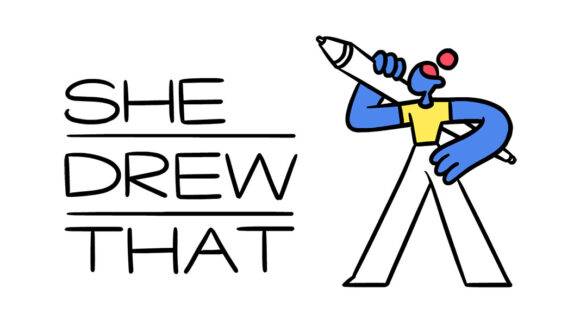

She Drew That Releases 2024 U.K. Animation Industry Salary Survey
She Drew That, a U.K.-based animation organization that London-based director and animator Hannah Lau-Walker launched in 2019, has published the results of its 2024 salary survey, collated over six weeks in September and October 2024.
The confidential questionnaire invited U.K. industry professionals to submit information regarding salaries, day rates, work roles, and seniority status, among other data related to animation labor. Previous results, published in 2023, produced quantifiable data that women animation workers are paid less than their male counterparts, regardless of experience, and that has not changed in the most recent survey.
The 2024 survey presented its findings in a 14-page document (download HERE) and is based on the responses of nearly 500 U.K. animation professionals in commercials, features, television, games, direct-to-client, as well as independent artists. Respondents included 301 males, 160 females, 25 non-binary, as well as some who preferred not to say. Eighty-four percent of respondents were based in England, 6% in Scotland, 4% in Wales, 3% in Northern Ireland, and 3% lived outside the U.K., but worked for UK companies.
Here are some of the key takeaways:
- 41% of participants regarded their current salary as “fair.”
- 49% said their current salary was “unfair.”
- 45% indicated an increased salary from 2023.
- 36% indicated the same pay in 2024 as in 2023.
- 19% experienced a decrease.
The survey added the following analysis based on statistical averages.
- Trends indicate that “increased pay” reduced from 56% to 45% while “decreased pay” has nearly doubled from 10% to 19%.
- Average male salaries are consistently higher than female and non-binary categories in all industries with one exception: Day rate in the games industry. The report adds the caveat: “[T]he extremely small total number of respondents in the games industry category makes a meaningful comparison difficult.”
- Male workers display higher average earnings than female and non-binary workers in all job descriptions except in art department (day rate) and production (annual salary).
- Among seniority levels, male workers have a higher average earning at all levels compared to female and non-binary.
The report observed that “last year has been tough for anyone – salaried or day rate, junior or experienced – seeking to negotiate pay for animation work in the U.K.” Respondents to the survey cited a variety of reasons for the downturn, with common reasons including “a general downturn in the economy, the threat of AI, the writers’ strike, with continued effects from covid.”
Further from the survey:
A lot of comments emphasized that securing work on low budgets directly affected salary and salary negotiations, some also mentioned that pitching too competitively had left studios/organizations disorganized as they tried to work with less resources than needed to deliver work appropriately. The consequence of reduced budgets resulted in lower pay or greater workloads, and staff taking on a wider range of roles, increasing their responsibility through multi-tasking without increased reward. These difficulties highlighted the absence within the industry of clear pay structures and policies on pay, pay reductions and a lack of consistency regarding pay for specific role or responsibilities.
In conclusion, the report offered five recommendations for strengthening the health of the U.K.’s animation industry:
- More employers in the animation industry need to adopt and operate an open and consistent pay structure to avoid the potential sense of unfairness in pay practice, and to keep animation talent in the U.K.
- Studios need to recognize that establishing a workable budget to deliver a quality product can be assisted by being more open with their workers about available budgets and options for distribution of responsibilities.
- Those working in the animation industry need to have robust personal networks to gather information about studios, clients, projects, and patterns of behavior that will enable them to feel more confident in establishing their rate of pay, and base their sense of fairness on the conditions that prevail in the marketplace.
- University animation courses need to strengthen the readiness of their graduates to gain employment in this competitive industry and this could be helped by establishing more active and constructive links with employers in the animation industry.
- Studios and animation companies can invest time to engage with universities to provide practical and useful experience for animation students and help them to understand the demands of working in the animation industry.
Further details on the salary report, as well as the reports from the two prior years, can be accessed at the She Drew That website.

